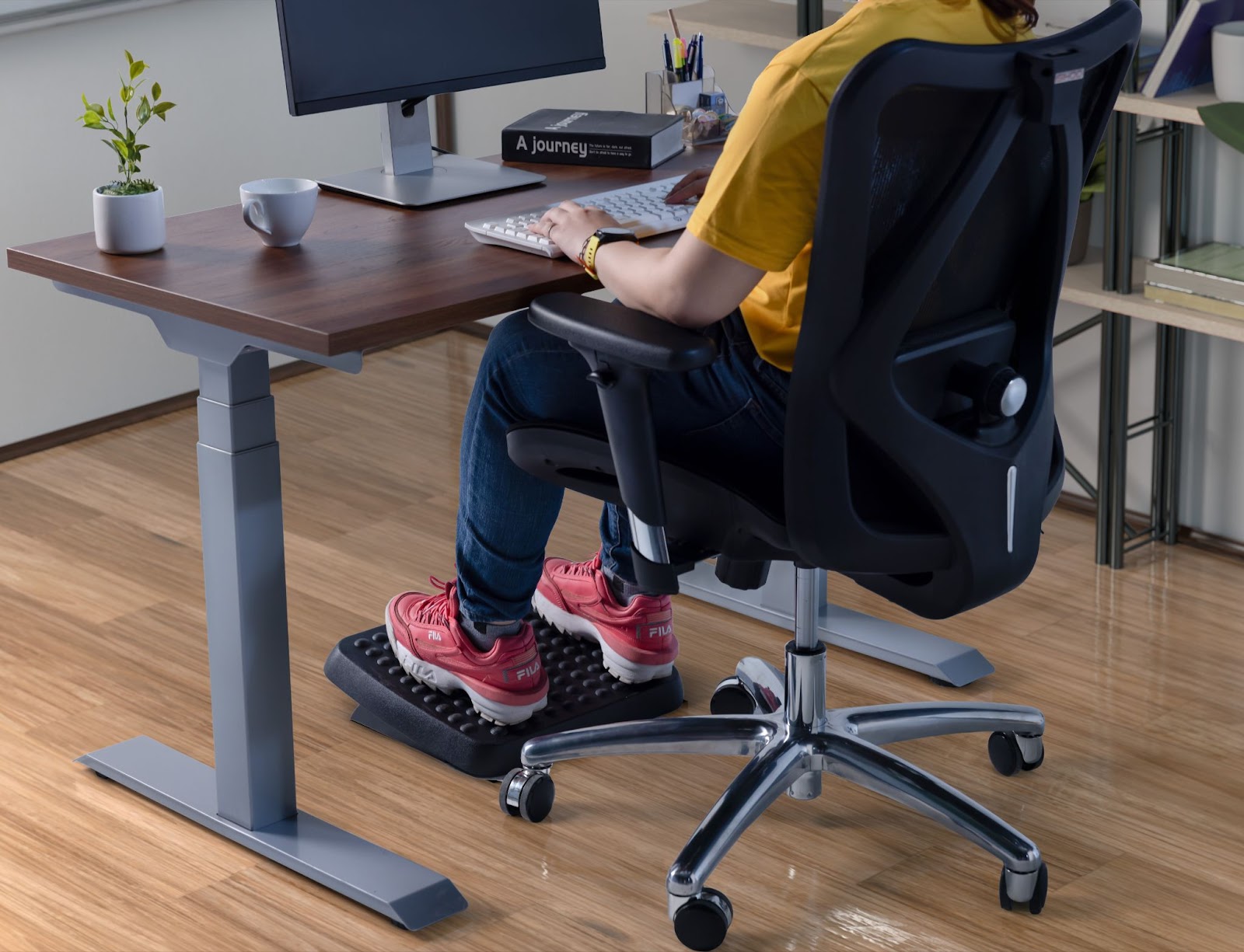As we move to the new normal of working from home, it is important to understand how the law applies to this. In this blog, we will discuss UK ergonomics, key legislation and Guidelines to be followed in the United Kingdom as it overcomes the ever-challenging COVID-19 development globally.
United Kingdom / UK Ergonomics Requirements
Under the Health and Safety at Work etc Act 1974, it is one of the many duties of the employer to ensure that reasonably practicable measures are taken as necessary to ensure the safety and health of his employees at work. It also includes providing and maintaining for those persons a work environment which is safe, without risk to health, and adequate as regards facilities and arrangements for their welfare at work. This is the reason why ergonomics at the workplace needs to be looked at.
One of the key challenges for the present Work from Home situation would be setting up an ergonomic workstation. This could be understood with the information the legislation covering musculoskeletal disorders at work. The legislation and guidance documents share useful information to prevent Musculoskeletal Disorders (MSD) at the workplace, which are muscle, tendon or nerve disorders caused by repetitive exertions, rapid motions, awkward postures, high force contact stresses, vibrations, and/ or low temperatures. Work-related MSDs are also referred to as cumulative trauma disorders, repetitive strain injuries, or repetitive motion illnesses.
The Management of Health and Safety at Work Regulations require employers to assess the risks to the health and safety of their workers. The assessment may identify risks covered by other regulations relevant to MSDs in the workplace and employers are obliged to comply with those regulations too.
The Health and Safety (Display Screen Equipment) Regulations set out what employers should do if their workers are habitual users of display screen equipment, including:
- do a DSE workstation assessment
- reduce risks, including making sure workers take breaks from DSE work or do something different
- provide an eye test if a worker asks for one
- provide training and information for workers
The Workplace (Health, Safety and Welfare) Regulations cover a wide range of basic health, safety and welfare issues, including lighting, floors, workstations and seating. They apply to most workplaces.
The Manual Handling Operations Regulations require employers to carry out a risk assessment on all manual handling tasks that pose an injury risk. Employers must:
- avoid hazardous manual handling, so far as is reasonably practicable
- assess the risk of injury from any hazardous manual handling operations that cannot be avoided
- reduce the risk of injury from hazardous manual handling to as low as reasonably practicable
United Kingdom Environmental Health and Safety Requirements
All companies based in the United Kingdom are to abide by the Health and Safety at Work etc Act 1974 and its subsidiary legislations. The Act requires all employers to conduct a risk assessment to protect employees and others from harm. Hazard here means anything with the potential to cause bodily injury, and includes any physical, chemical, biological, mechanical, electrical, or ergonomic hazard. It is a best practice to review risk assessments at least annually and update it if necessary, especially if new hazards are introduced to the workplace and communicated with all staff. Given the current situation where Work from Home has been the new adaptation for most companies, it would be more relevant to ensure that the risk assessments are updated accordingly. This is to ensure that companies are legally compliant as well as reviewed their Business Continuity Plan for any emergency or unforeseen situation.
The Reporting of Injuries, Diseases and Dangerous Occurrences Regulations 2013 (RIDDOR) requires mandatory reporting of
- work-related accidents which cause death.
- work-related accidents which cause certain serious injuries (reportable injuries);
- diagnosed cases of certain industrial diseases; and
- certain ‘dangerous occurrences’ (incidents with the potential to cause harm).
The reported data helps the authorities to identify persons and industries at risk, as well as to identify new and emerging ones.
Current Legislation
As of 11 May 2020, can follow the guidance of Working safely during coronavirus (COVID-19), a collaborative effort by the Department for Business, Energy & Industrial Strategy and Department for Digital, Culture, Media & Sport. Employers are provided information on reducing the risk of exposure of COVID-19 and sustaining the business in a safe manner.
What can you do as an Employer to ensure compliance?
Develop and/or Update the COVID-19 Response Plan
Some of the key actions as below:
- address the level(s) of risk associated with various workplaces and work activities in the COVID-19 business plans and risk assessments.
- consider worker’s individual risk factors (i.e., older workers, presence of underlying medical conditions, etc.).
- Communicate the risk assessment with all workers
- include in the plan a response plan to deal with a suspected case of COVID-19.
- Providing equipment for people to work from home safely and effectively. For administrative roles, this may include access to work systems.
Communication channels
- Regular update to staff on updates on work arrangements or other useful information via appropriate channels, i.e., Intranet, emails, virtual town hall meetings, etc.
Keeping updated with legal updates is as important as having to comply with them. It is a chargeable offence to be non-compliant which can result with penalty along with jail term depending on the severity of the event.
How can Fit for Work help?
To learn more about setting up or managing an ergonomics programme that supports staff working from home or in the office or support with staying legally compliant, you can reach out to Fit for Work. For more information on our Ergonomics Self-Assessment and Education Tool, contact us.



